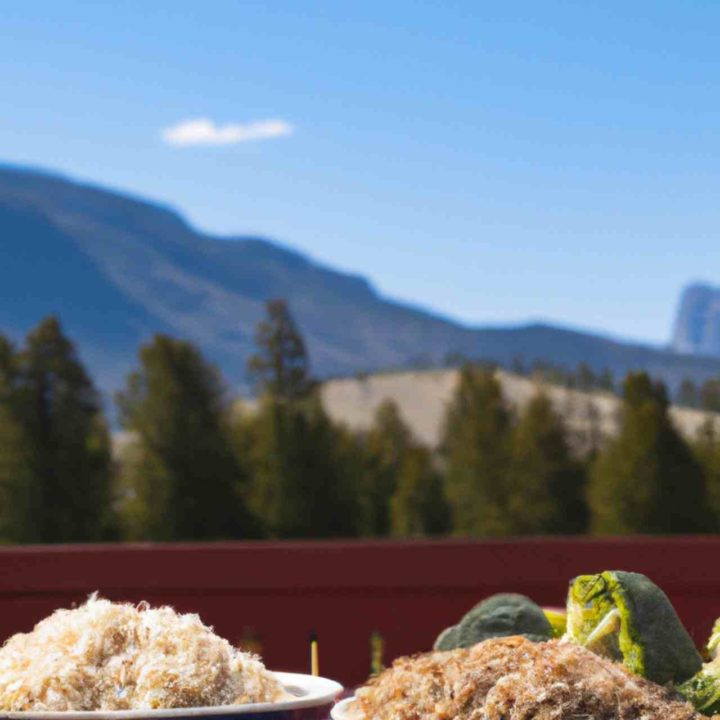Rice Substitutes (What Can You Use Instead of Rice?)
Most people think of rice as a staple grain in their diet, but what do you do if you’re out of rice or don’t want to eat it?
Many amazing rice alternatives can be used in recipes, and this blog post will list some of the most favored ones.
So whether you’re looking for a healthier option or just ran out of rice, there are sure to be nutritious alternatives to rice that fits your needs!
10 Best Substitutes for Rice for 2024
If you’re looking to cut down on carbs or switch up your usual rice routine, there are plenty of delicious options. From riced cauliflower and potatoes to quinoa and farro, there’s bound to be a grain (or vegetable) that suits your taste and is packed with health benefits. Keep reading for a list of healthy rice alternatives.
Riced Cauliflower
Cauliflower rice is a popular low-carb alternative to rice that has a similar texture. It’s also packed with nutrients like vitamin C and fiber. To make riced cauliflower, simply pulse raw cauliflower florets in a food processor until they resemble rice grains. You can cook the “rice” in a pan with a little oil or water.
Potatoes
Potatoes are another starchy veggie that makes a great rice substitute. They have a fluffy texture and can be flavored however you like. To make potato “rice,” start by grating peeled potatoes in the large holes of a box grater. Then, cook the potatoes in a pan with butter or oil until they’re soft.

Quinoa
Quinoa is a nutrient-rich grain that has a slightly nutty flavor. It’s also one of the only plant-based sources of complete protein and produces red blood cells, making it a great option for vegetarians and vegans, especially with high blood sugar. To cook quinoa, simply simmer it in water or broth on the stovetop until it’s tender. Fluff with a fork before serving.
Riced Broccoli
Broccoli rice is another low-carb option that’s similar in texture to traditional rice. Broccoli is also packed with grams of fiber, vitamins, and minerals, making it a healthier choice than white rice. To make riced broccoli, grate raw broccoli florets on the large holes of a box grater or pulse them in a food processor until they’re broken down into small pieces. Cook the “rice” in a pan with oil or water until tender.
Barley
Barley is a chewy grain with a nutty flavor that makes an excellent substitute for rice in pilafs and salads. It’s also high in fiber and other nutrients like selenium and manganese. To cook barley, simply simmer it in water or broth on the stovetop until tender (this will take about 30-40 minutes). Fluff with a fork before serving.
Shirataki Konjac Rice
Shirataki konjac rice is made from the konjac root, which is native to Asia. It has almost zero calories and carbs, making it ideal for those on low-carb diets. Shirataki rice can be found in the Asian aisle of most supermarkets and should be rinsed before cooking. Simply simmer it in water or broth for 3-5 minutes before adding it to your dish.
Farro
Farro is an ancient grain with a chewy texture and nutty flavor similar to barley. It’s also high in fiber and other nutrients like iron and magnesium. To cook farro, simmer it in water or broth on the stovetop until tender (this will take about 20-30 minutes). Fluff with a fork before serving.
Shredded Cabbage
Shredded cabbage makes an excellent stand-in for rice in stir-fries and other dishes where you would normally use white rice. Cabbage is also low in calories and high in vitamins A and C. To use shredded cabbage as “rice,” simply sauté it in oil or water until tender (this will only take 3-5 minutes).
Mushroom Rice
Mushroom “rice” is perfect for those who want all the flavor of fried rice without any of the carbs from traditional white rice (or even brown rice). Mushrooms have a meaty texture that makes them ideal for imitating rice grains, plus they absorb flavor well with low grams of carbs, so your dish will be extra flavorful. To make mushroom “rice,” sauté mushrooms (portobellos work well) in some oil or butter until they’re soft, then add them to your dish as you would normally add cooked rice.
Lentils
Lentils are small legumes that come in many different colors, including green, brown, red, black, yellow, and orange. They have a nutty flavor and can be used as an alternative to white and brown rice. Lentils are also great sources of fiber, protein, iron, potassium, and other nutrients. To cook lentils, simply simmer them in water or broth on the stovetop until they’re soft (this will take about 15-20 minutes).
Sweet Potato
Sweet potato “rice” is perfect for those who want fried rice flavor without any of the carbs from traditional white rice (or even brown rice). Sweet potatoes have a sweet, nutty flavor that makes them ideal for imitating rice grains. Plus, they absorb flavor well, so your dish will be extra flavorful. To make sweet potato “rice,” sauté sweet potato cubes (peeled or unpeeled, depending on your preference) in some oil or butter until they’re soft, then add them to your dish as you would normally cook rice.
Conclusion
There are plenty of delicious healthy rice substitutes, including whole-wheat couscous (made from tiny pearls of flour), wild rice, chickpea rice, whole wheat bread (protects from heart diseases), zucchini rice, and whole-wheat orzo (which is a type of pasta) for traditional white rice out there, so don’t be afraid to experiment! Whether you’re looking to cut down on carbs or simply want to switch up your usual routine, there’s bound to be an option on this list that suits your taste. Have fun trying out new recipes!